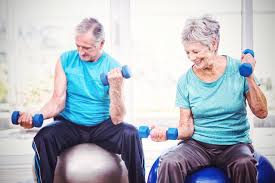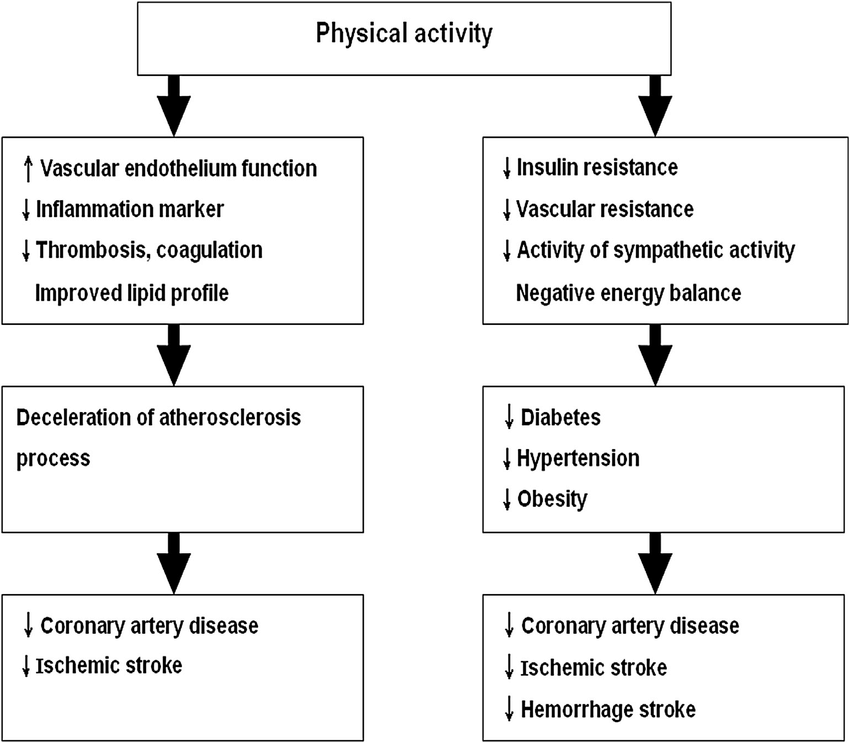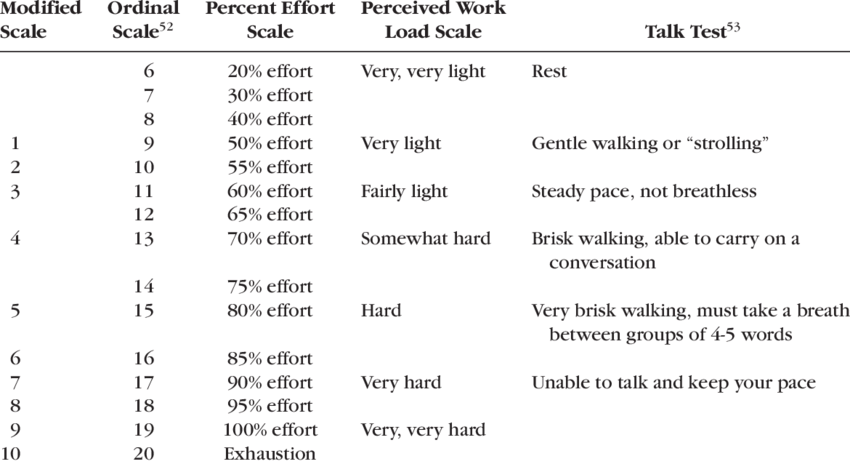Cardiovascular Exercises For Elderly
Original Editor Andeela Hafeez[edit | edit source]
Top Contributors - Oshin Fernandes, Kim Jackson, Vidya Acharya, Andeela Hafeez, 127.0.0.1, Adam Vallely Farrell and Lauren LopezIntroduction[edit | edit source]
Cardiovascular disease is an important cause of mortality and morbidity worldwide among older individuals. Although there are considerable risk factors involved, physical inactivity plays a vital role in patients suffering from cardiovascular diseases.[1] Physical activity is defined as any bodily movement produced by the contraction of skeletal muscles, which results in energy consumption beyond resting expenditure. It can be also be described as an activity performed during exercise and recreation at leisure, physical activity-associated work, transportation, and housework that aims to improve and maintain physical fitness. Physical activity is usually measured by objective or subjective assessment, which may yield a semi quantitative or quantitative estimate of the energy consumption associated with the performance of physical activity.[2]
Benefits Of Exercises[edit | edit source]
The effects of physical activity in cardiovascular disease patients helps in,
- deceleration of the atherosclerotic process, including amelioration of endothelial dysfunction.
- decreased systematic inflammation and thrombosis that accompanies physical activity.
- control risk factors such as hypertension, diabetes, and obesity.[2]
Measurement Of Physical Activity[edit | edit source]
- The common method used is called Metabolic Equivalent (MET).
- One MET is equivalent to the energy expended during quite sitting. Normal value: 3.5 mL O2/ kg*min.
- Each of the physical activity have been categorized into different activities corresponding to its MET values.[3]
Perceived Rate Of Exertion[edit | edit source]
- According to the ACSM guidelines, physical activity intensity by describing sitting as 0 and the greatest effort possible is 10.
- Moderate-intensity activity (5 or 6) - slight increase in breathing and heart rates.
- Vigorous-intensity activity (7–8) - large changes in breathing and heart rates.[3]
+
Pedometers and Accelerometers[edit | edit source]
Pedometers and Accelerometers are objectively measuring physical activity methods.
- Pedometer is a belt- or waistband-worn motion sensor that records the number of steps taken while walking throughout the day, along with an advantage of capturing distance and energy expenditure.
- Accelerometer measures the accelerations of the body during movement along with frequency, duration, and intensity of physical movement in a time-stamped manner. It is measured in 3 planes that is vertical, medio-lateral and antero-posterior.[3]
Types Of Exercises[edit | edit source]
Low-Intensity Exercises[edit | edit source]
The most standard low-intensity cardio activity is walking. Low-intensity exercises results in slight increase in heart and breathing rate, and are suitable for older adults with a range of medical conditions that make exertion particularly difficult or dangerous.
Walking at a slow pace during standard activities, such as shopping, counts toward your weekly goal. If your health and stamina improve, you might consider increasing the pace or length of your walks. Recreational swimming is another low-intensity cardio exercise that reduces joint strain.[4]
Moderate-Intensity Exercises[edit | edit source]
Aerobic exercises are the activities that uses large muscle groups, maintained over a period of time for example brisk walking, swimming or dancing. These activities must be performed at a moderate level where an individual can notice increase in heart and breathing rate.[3]
More moderate-intensity exercises are generally recommended for healthy older adults. Cycling is a common moderate-impact exercise, though road biking can have hazards especially if you struggle with balance. Instead, consider a recumbent stationary bike which reduces your injury risk. If you enjoy the pool, lap swimming is more vigorous than recreational swimming, though still gentle on joints. If you prefer being outdoors, consider hiking as a more strenuous option than walking.[4]
High-Intensity Exercises[edit | edit source]
High-intensity, or vigorous cardio exercises will result in large increase in heart and breathing rates. Most of the progressive resisted strength training in older adults include high-intensity strength training protocols, involving 8–12 repetitions of the exercise to the point of muscle fatigue.[3]
One minute of vigorous exercise is the equivalent of two minutes of moderate-intensity exercise, so you only need 75 minutes weekly to meet the CDC recommendations. High-intensity cardio activities tend to put stress on joints and can cause injuries. If you do want to include an activity such as jogging, try an elliptical machine, which tends to reduce the impact on your ankles and knees. Another option is cross-country skiing, a vigorous cardio exercise that incorporates muscle extension and flexion more so than muscular load.
Choose activities and exercises you enjoy[edit | edit source]
Think about activities that you enjoy and how you can incorporate them into an exercise routine.[5]
- Listen to music while lifting weights
- Window shop while walking laps at the mall
- Get competitive while playing tennis
- Take photographs on a nature hike
- Meet new people at a yoga class
- Watch a favorite movie while on the treadmill
- Chat with a friend while walking, stretching, or strength training
Reference[edit | edit source]
- ↑ Nystoriak MA, Bhatnagar A et al. Cardiovascular effects and benefits of exercise. Frontiers in cardiovascular medicine. 2018; 135
- ↑ 2.0 2.1 Sho-Jen Cheng, Huei-Kung Yu, Yu-Chi Chen, Chun-Yen Chen, Wei-Chung Lien, Po-Yi Yang, Gwo-Chi Hu et al. Physical Activity and Risk of Cardiovascular Disease Among Older Adults. International Journal of Gerontology 7 (2013); 133-136
- ↑ 3.0 3.1 3.2 3.3 3.4 Taylor D. Physical activity is medicine for older adults. Postgraduate medical journal. 2014 Jan 1;90(1059):26-32.
- ↑ 4.0 4.1 Cardio Exercises for Seniors. LIVESTRONG.COM Accessed fromhttp://www.livestrong.com/article/100890-cardio-exercises-seniors/
- ↑ Senior Exercise and Fitness Tips. HelpGuide. Accessed fromhttp://www.helpguide.org/articles/exercise-fitness/exercise-and-fitness-as-you-age.htm










